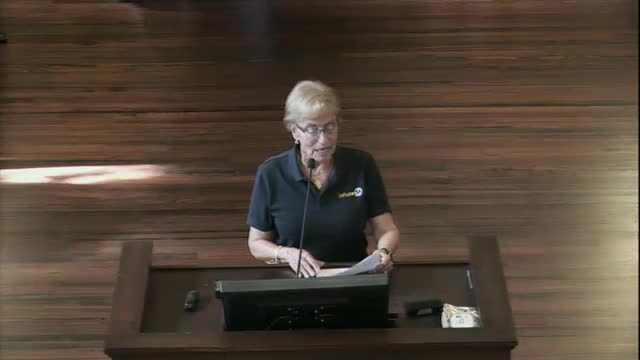Bexar County faces alarming debt as budget talks intensify
August 20, 2024 | Bexar County, Texas

This article was created by AI summarizing key points discussed. AI makes mistakes, so for full details and context, please refer to the video of the full meeting. Please report any errors so we can fix them. Report an error »

During a recent Bexar County government meeting, community advocates voiced significant concerns regarding the county's budget and its implications for residents. Susan Paige, a representative from the nonprofit organization Infuse SA, highlighted the alarming $2.5 billion debt that Bexar County currently faces, the highest per capita debt in Texas. She urged county officials to adopt a two-year moratorium on new debt and unfunded capital projects, emphasizing the need for fiscal responsibility. Paige expressed her fears that the proposed budget would place an undue financial burden on residents, calling for prioritization of essential services over discretionary spending.
In a related discussion, Timothy Potter and Jonas Boyan from the organization Youth to Vote advocated for increased funding for the elections department. They reported on a successful recruitment event for student poll workers and emphasized the importance of engaging young voters in the democratic process. They invited county officials to support their upcoming Youth Voter and Poll Worker Fest, aimed at further mobilizing youth participation in elections.
Michael Valdez, a college student, also addressed the meeting, commending a proposed $100 million allocation to the Advanced Transit District. However, he stressed the urgent need for improvements to the current transit system, particularly in underserved areas of Bexar County, where students lack reliable transportation options.
Kathleen Vail, a newly appointed member of the Bexar County Election and Voter Advisory Committee, shared insights on the growing number of registered voters in the county, particularly among youth. She called for adequate staffing and resources to ensure a smooth voting experience, especially given the anticipated high turnout for the upcoming elections.
The discussions underscored a collective call for responsible budgeting and enhanced civic engagement in Bexar County, as community members seek to ensure that local government decisions reflect the needs and financial realities of residents.
In a related discussion, Timothy Potter and Jonas Boyan from the organization Youth to Vote advocated for increased funding for the elections department. They reported on a successful recruitment event for student poll workers and emphasized the importance of engaging young voters in the democratic process. They invited county officials to support their upcoming Youth Voter and Poll Worker Fest, aimed at further mobilizing youth participation in elections.
Michael Valdez, a college student, also addressed the meeting, commending a proposed $100 million allocation to the Advanced Transit District. However, he stressed the urgent need for improvements to the current transit system, particularly in underserved areas of Bexar County, where students lack reliable transportation options.
Kathleen Vail, a newly appointed member of the Bexar County Election and Voter Advisory Committee, shared insights on the growing number of registered voters in the county, particularly among youth. She called for adequate staffing and resources to ensure a smooth voting experience, especially given the anticipated high turnout for the upcoming elections.
The discussions underscored a collective call for responsible budgeting and enhanced civic engagement in Bexar County, as community members seek to ensure that local government decisions reflect the needs and financial realities of residents.
View full meeting
This article is based on a recent meeting—watch the full video and explore the complete transcript for deeper insights into the discussion.
View full meeting
